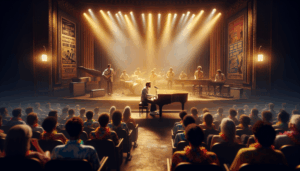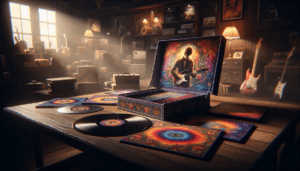Momentary Lapse of Reason and a Military-Sized Comeback
In 1987, Pink Floyd found themselves at a crossroads. Roger Waters had walked away, convinced that the band couldn’t continue without him. David Gilmour and Nick Mason had other plans — and a few surprises up their sleeves, including one that involved the United States Army.
With their A Momentary Lapse of Reason tour taking shape, Pink Floyd, true to form, pushed the boundaries of stage production. Their longtime lighting designer Marc Brickman was determined to deliver something unforgettable — and in the pursuit of the rarest laser effect imaginable, he found himself knocking on the Army’s door. The golden laser, classified as a potential weapon, was not commercially available. But Floyd secured it, on one condition: an Army rep would accompany the tour to ensure safety at every stop.
“This is stuff only Pink Floyd gets into,” said industry insider Paul Rappaport on the UCR Podcast. “They don’t just do concerts — they create otherworldly events.”
Brickman was even offered a shot at experimental negative-ion tech that could create artificial explosions over stadiums — he politely declined.
Financing the Spectacle
With no tour sponsors lined up, Pink Floyd shouldered the immense cost themselves. Mason famously leveraged his prized 1962 Ferrari 250 GTO — a car now worth over $40 million — to help finance his share. Gilmour joined him in covering what would eventually balloon to a $55 million production.
Their elaborate plans included laser arrays in previously unseen hues, airborne figures (including the less-successful “Icarus”), and even a proposed radio-controlled UFO. While some ideas stayed grounded due to cost or safety, what remained still redefined live rock spectacle.
Victory Without Waters
Spanning nearly 200 shows and grossing over $135 million, the A Momentary Lapse of Reason tour proved the band’s legacy didn’t end with Waters’ departure. They debuted in new countries like the USSR, Spain, and Norway, and returned to Japan and Australia for the first time since 1972.
“Working with these guys,” Rappaport noted, “you wind up doing things you never imagined. They took you places — literally and creatively — no other band could.”
Whether via sound, spectacle, or science, Pink Floyd’s post-Waters era didn’t just survive — it soared.





